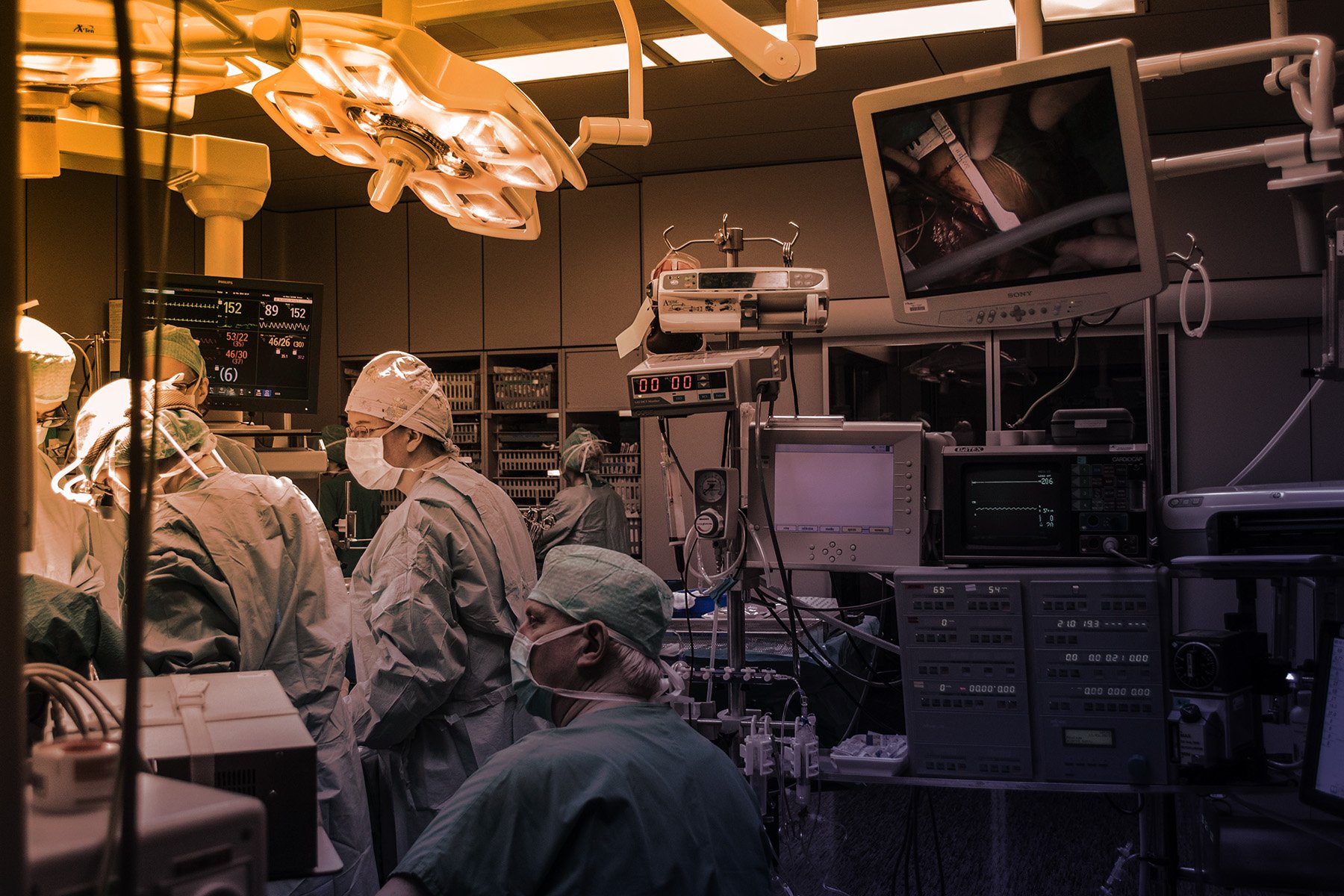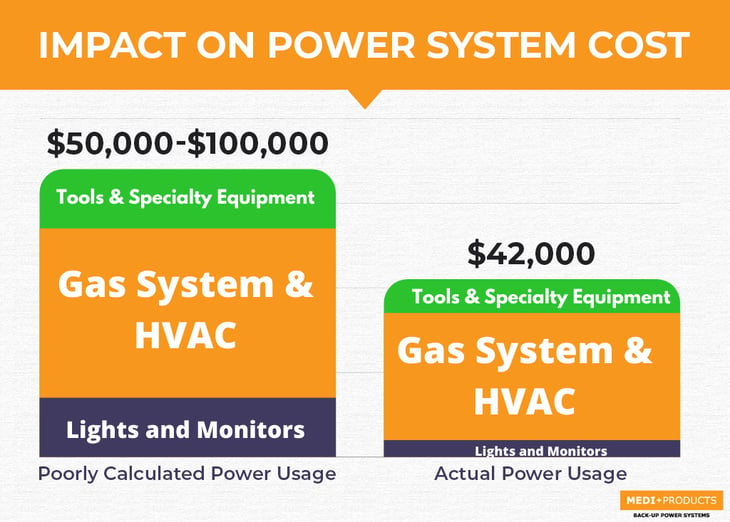We would like to hear from you
Contact Us!
Our sales and technical support staff are available 8-5 EST, Mon-Fri

When doing surgery, keeping patients safe is vital if the power goes out.
Small surgery centers usually need backup power systems for between $5,000 and $9,000.
Bigger surgery centers, like ones with both an operating room and a recovery area, often spend about $5,000 to $15,000 for each operating room.
Office-based surgery centers (OBS) must comply with regulations requiring 2-4 hours of emergency backup power. These standards come from the government or accredited bodies deemed sufficient.
This backup power ensures that patients currently in surgery can be safely moved if the power goes out. While services can pause until power returns, procedures can resume once restored.
Since OBS suites are smaller and handle simpler procedures, around 80% of our orders are between $5,000 and $9,000. These systems provide 2-4 hours of backup power to meet accreditation standards.
Larger systems are also available for facilities that must maintain full operations or face frequent, extended outages.
Ambulatory surgery centers (ASCs) usually need the most potent backup systems. Systems costing over $35,000 typically go to ASCs because they’re larger and need more power. But most of the time, a smaller backup system will be enough.
Unlike hospitals, ASCs don’t start new surgeries during a power outage and only need to finish any surgeries already in progress. Because of this, most ASCs can budget around $5,000 to $15,000 for each operating room when getting a backup power system.
In exceptional cases, ASCs might require large and costly backup systems. However, both ASCs and OBS can often find more budget-friendly solutions by reviewing their equipment usage.
Modern LED technology makes lights and monitors highly efficient, requiring minimal power. By accurately estimating equipment usage during procedures, costs can be reduced. Often, engineers overestimate power needs by assuming equipment runs continuously, leading to oversized systems.
For example, operating tables, although high in startup wattage, are used only briefly during procedures. Calculating power needs for just a few minutes of use instead of the full 2-4 hours can significantly lower system size and cost.

On the other hand, many ASCs and OBS facilities still use legacy backup power systems, often fuel-powered generators. These older systems may not engage quickly enough, causing delays between the power outage and when backup power kicks in. For some very old systems, this delay can be as long as 15 minutes.

For these scenarios, backup units with large inverters, but only a few batteries would be perfect. They're able to supply an instant surge of short-term “bridge” power. This ensures an operating room can continue to function until the main backup power source is ready to take over. Due to the overall smaller size, scope, and responsibility of the battery-powered system, it is also much more affordable than a complete replacement.
Every system-built meets every customer's needs in terms of power and form factor. The quickest way to find the perfect system for you is to contact Medi Products directly.
To speak to our product experts, engineers, and sales teams about quoting a system and adding an alarm system, contact us via:
 |
1.800.765.3237 |
 |
sales@mediproducts.net |
Our sales and technical support staff are available 8-5 EST, Mon-Fri